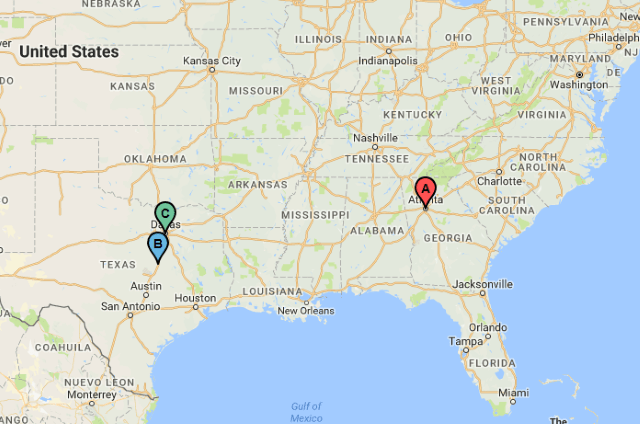 AT&T is rolling out mobile 5G service for its wireless smartphone and tablet customers in a dozen U.S. cities by year’s end, starting in parts of Atlanta, Ga., and portions of Dallas and Waco, Tex.
AT&T is rolling out mobile 5G service for its wireless smartphone and tablet customers in a dozen U.S. cities by year’s end, starting in parts of Atlanta, Ga., and portions of Dallas and Waco, Tex.
“After significantly contributing to the first phase of 5G standards, conducting multi-city trials, and literally transforming our network for the future, we’re planning to be the first carrier to deliver standards-based mobile 5G – and do it much sooner than most people thought possible,” said Igal Elbaz, senior vice president, wireless network architecture and design. “Our mobile 5G firsts will put our customers in the middle of it all.”
AT&T’s mobile 5G will work differently from the fixed wireless home broadband service Verizon is launching this year using small small cell neighborhood antennas. But like Verizon, AT&T is taking a gradual, incremental approach to the next generation of wireless technology.
In 2017, AT&T announced what it calls “5G Evolution” service in almost two dozen cities, although this branding was derided as “fake 5G” in the tech press because, in reality, it is just an improvement of today’s widely deployed 4G LTE service. Similar technology is also in place at T-Mobile. In the fall of 2017, AT&T introduced 4G LTE-Licensed Assisted Access (LTE-LAA) technology in Indianapolis and parts of Chicago, Los Angeles and San Francisco. This network lays the foundation to offer gigabit speed wireless service, and is especially useful in areas where AT&T’s spectrum holdings are tight.

AT&T’s initial 5G rollout will serve parts of:
A – Atlanta, Ga.
B – Waco, Tex.
C – Dallas, Tex.
AT&T is preparing its existing wireless network to permit gradual migration to the completed 5G wireless standard over both existing and new spectrum.
This year, AT&T plans to launch some 5G service using millimeter wave spectrum, which is very line-of-sight and offers a more limited service area. But the technology will support very fast wireless speeds and offer plenty of bandwidth. AT&T could deploy this technology initially in dense population areas and places like stadiums, malls, and convention centers.
“Ultimately, we expect to reach theoretical peak speeds of multiple gigabits per second on devices through mobile 5G,” AT&T wrote in a press release. “While speed is important, we also expect to see much lower latency rates. With higher speeds and lower latency rates, our mobile 5G network will eventually unlock a number of new, exciting experiences for our customers.”
If past precedent means anything, AT&T will likely only initially offer 5G service in selected parts of each city. It needn’t hurry, because equipment designed to work with the new spectrum isn’t expected to become widely available until 2019. A gradual transition will also please shareholders by keeping network upgrade costs predictable over the next 3-5 years.
AT&T isn’t expected to use 5G technology anytime soon as part of its taxpayer-funded, rural wireless broadband deployment. AT&T currently uses its 4G LTE technology to power its fixed wireless rural broadband service. AT&T claims this service was designed to assure download speeds of at least 10 Mbps, although customers using it report speeds are often lower, although sometimes higher. AT&T does not offer and network performance guarantees, stating, “service performance may be affected by your proximity to a cell site, the capacity of the cell site, the number of other users connected to the same cell site, the surrounding terrain, radio frequency interference, applicable network management practices, and the applications you use.” That will also be true of AT&T’s forthcoming 5G network.


 Subscribe
Subscribe
ATT is rising all over the USA with its wireless services, and it is good for every company to grow its services which is all the need of today’s IT world and business organizations who are using the wireless devices.